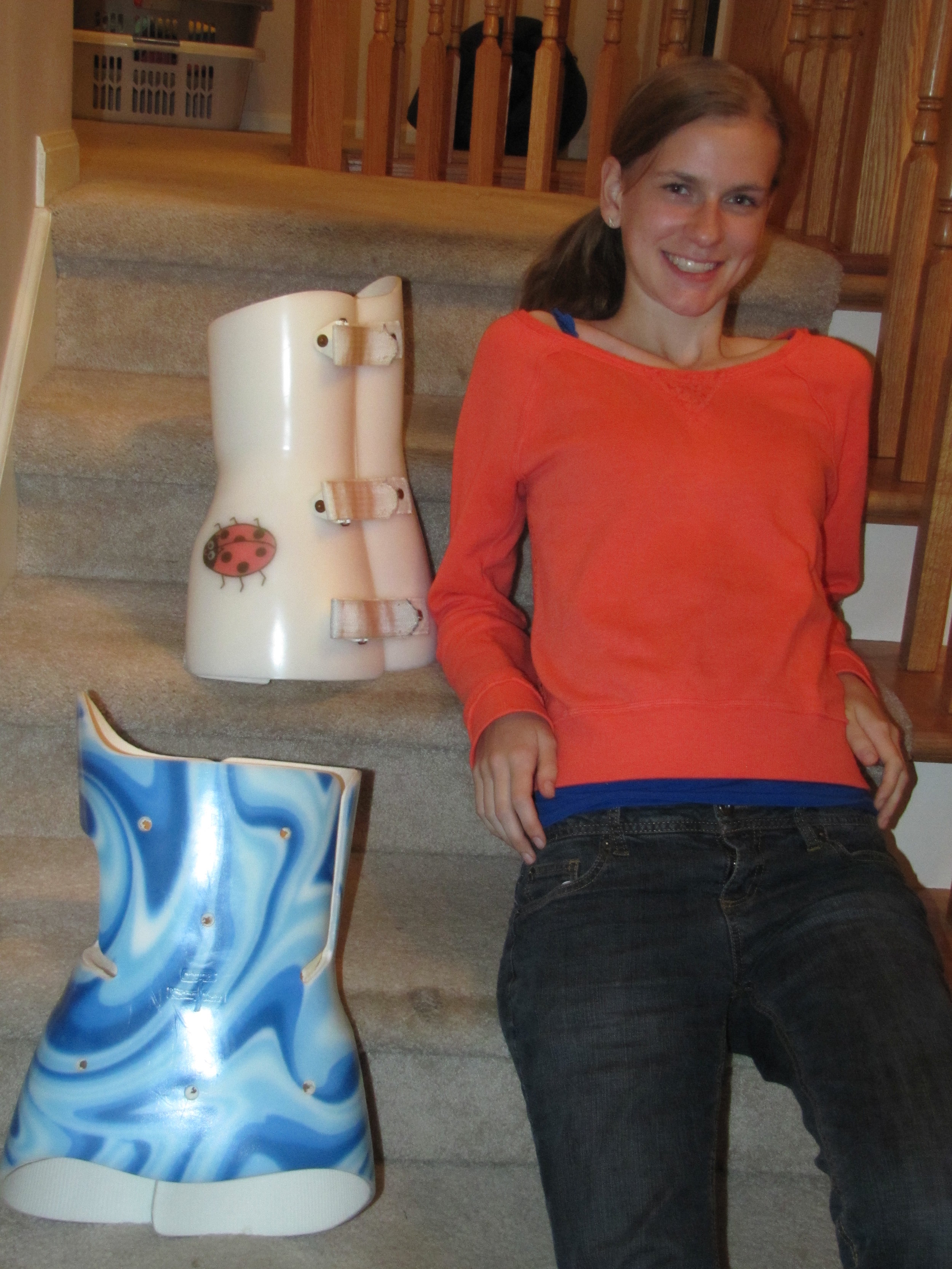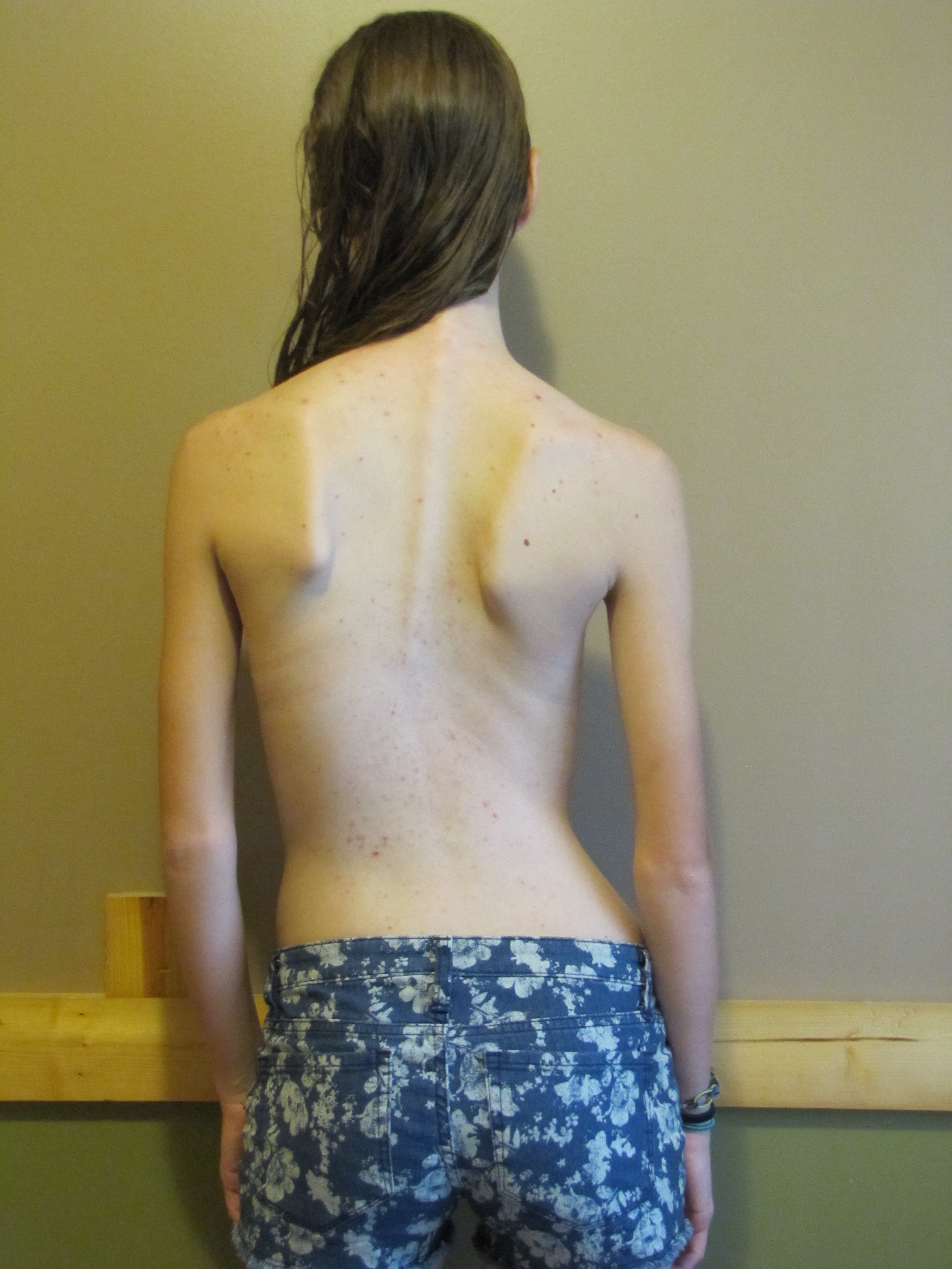Looking back (part 1): the girl and her curve
After church this morning, Leah said, "I wonder when people are going to stop asking me how I'm doing, and telling me how much better I look." We smiled and understood. It's not that she's annoyed by the concern our church family has shown or continues to show (quite the opposite...she doesn't mind the attention at all)...but I think she is beginning to feel "normal" again, and her diabetes has become a normal part of being normal. Today was her one-month mark. We are also two days away from her three-month mark after surgery. Thus, it seems like a good time to look back, at the story of Leah's back. Since I haven't blogged much about her scoliosis and spinal fusion surgery, and this has been a bigger part of her life so far than her one month with diabetes, I thought it deserved at least a post or two.
It started at the end of 7th grade when Leah failed her scoliosis screening at school. We have had three out of four kids fail these (thankfully two were found to be normal), and one was Seth (prior to Leah), so I wasn't too concerned. I assumed hers was probably normal too, so I didn't rush to set up the doctor appointment. That is, until one day in Target, when I happened to see her bare back as she was trying on some clothes. I noticed that her right hip was jutting out, while her left was straight and flat. I immediately made a doctor appointment, which led to x-rays (the first of countless more) and a consult with our long-time family friend, Dr. D., an orthopedic spine specialist. Leah was diagnosed with scoliosis (she had a 30 degree curve in her spine), and the recommended treatment was a back brace.
For the next two years, through all of 8th and 9th grade, Leah wore two different braces (she outgrew the first one). She took her brace off for showers, swimming, and other physical activities, like band, PE, and choir, but otherwise wore it pretty much 24-7. As you can guess, wearing a back brace can be a real pain, especially for a 14 or 15 year old girl who wants to wear the latest fashions. It can also be quite hot and sweaty when one is out hiking in Utah's national parks in July.
Leah persevered, with the hope that wearing the brace would stop her back curve from growing worse (even though we knew it may not correct it) and prevent the need for surgery in the future. In September of her sophomore year, she was finally told that she was near her full-growth, her curve was holding steady around the 20 degree mark, and she could stop wearing her brace. We celebrated.
Even before the re-check in December, Leah was concerned that her curve was getting worse again. She could see it in the mirror. And she was right. Her curve had gone right back to about 35 degrees without the corrective positioning of the brace. Dr. D. wasn't sure if anything could be done at that point, as he told us surgery isn't really recommended unless there is at least a 40-45 degree curve. On the other hand, he was concerned that her center of balance was off, i.e. her head did not sit in the center over her hips, and recommended a consultation with Dr. B., a pediatric orthopedic surgeon from St. Vincent's Hospital in Indianapolis.
In February, 2013, we met with Dr. B, who told us that Leah's curve had now increased to 41 degrees. Because her center of balance was off, gravity was pulling her head over to the side, causing the degree of her curve to worsen. Leah was considered a good candidate for spinal fusion surgery, and if she didn't get it sooner, she'd most certainly need it later. After Dr. B. explained to us what it would entail, we nervously "signed her up" to have spinal fusion surgery on July 15.
To be continued...






